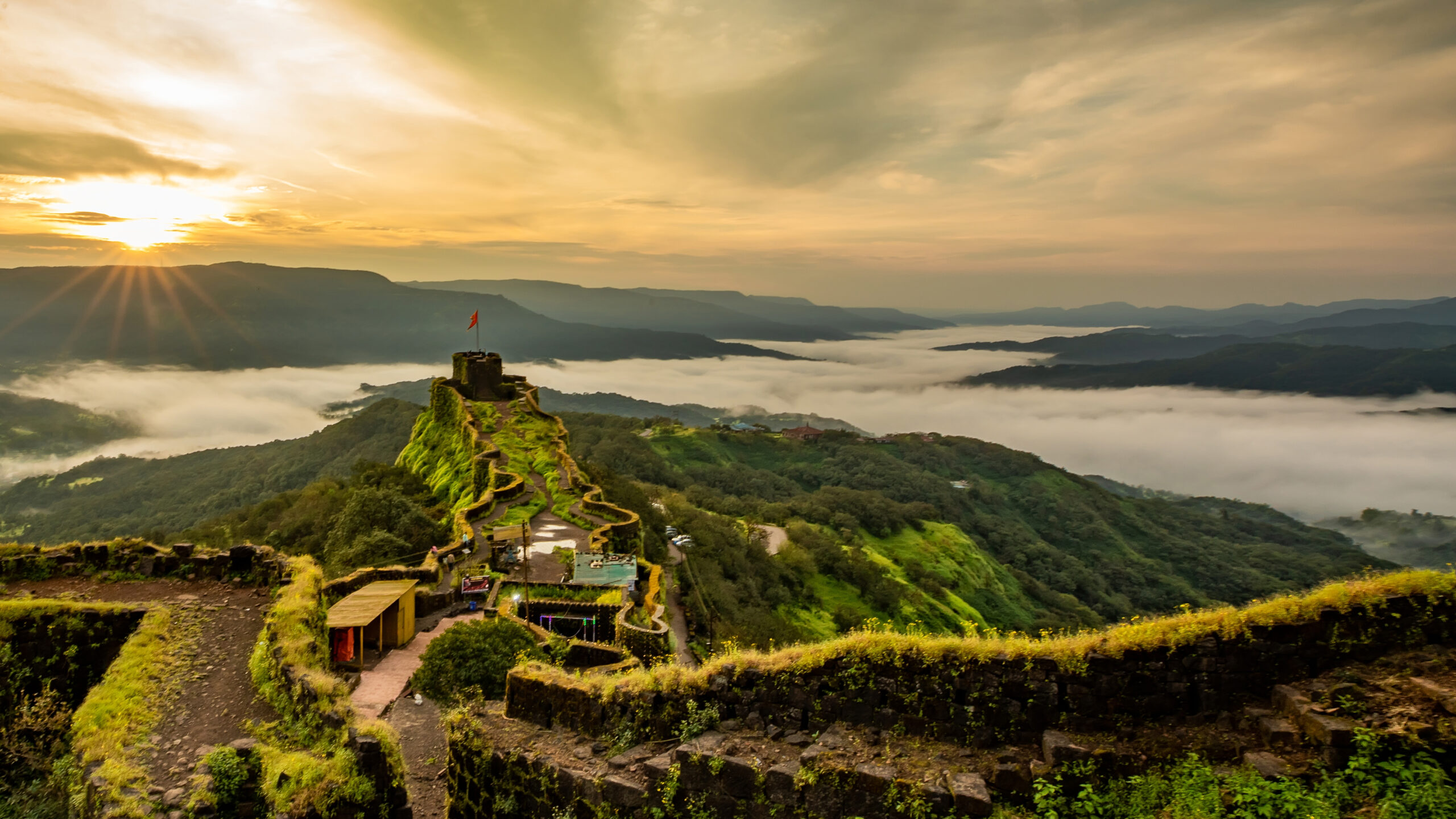Introduction:
Nestled in the Sahyadri mountain range of Maharashtra, Satara is a city that seamlessly weaves together a rich historical legacy with the breathtaking beauty of its natural surroundings. Steeped in history, adorned with ancient forts, and surrounded by lush landscapes, Satara invites travelers to embark on a journey that spans the realms of heritage, culture, and picturesque vistas.
Historical Forts: A Glimpse into the Past:
Satara is adorned with historical forts that echo the tales of Maratha valor and resistance. The Ajinkyatara Fort, perched atop a hill, offers panoramic views of the city and the surrounding hills. Built in the 16th century, the fort played a crucial role in Maratha history. Similarly, the Pratapgad Fort, located near Satara, is a testament to the legendary encounter between Chhatrapati Shivaji Maharaj and Afzal Khan.
Kaas Plateau: A Botanical Wonderland:
Satara is blessed with the proximity of the Kaas Plateau, often referred to as the Valley of Flowers of Maharashtra. During the monsoon season, the plateau comes alive with a kaleidoscope of wildflowers, creating a vibrant carpet of colors. Kaas Plateau is a UNESCO World Natural Heritage site, showcasing the region’s rich biodiversity and endemic flora.
Charismatic Temples: Spiritual Sanctuaries:
Satara is home to several ancient temples that hold spiritual significance. The Kshetra Mahuli is a revered pilgrimage site with a temple dedicated to Goddess Mahuli. The Sangameshwar Shiva Temple, located at the confluence of the Krishna and Venna rivers, offers a serene atmosphere for devotees seeking spiritual solace.
Charming Hill Stations: Mahabaleshwar and Panchgani:
Satara serves as a gateway to the popular hill stations of Mahabaleshwar and Panchgani. Mahabaleshwar, known for its scenic landscapes and strawberry farms, provides a refreshing retreat with its lush greenery and pleasant climate. Panchgani, perched atop the Sahyadri range, offers panoramic views of the surrounding hills and valleys, making it a favored destination for nature lovers.
Satara City: Blend of Tradition and Modernity:
The city of Satara itself is a blend of tradition and modernity. The historic Kas Plateau, the Ajinkyatara Fort, and the Shalini Palace stand as reminders of the city’s regal past. At the same time, the bustling markets, educational institutions, and vibrant local culture showcase the city’s modern and dynamic facets.
Satara – Birthplace of Chhatrapati Shivaji Maharaj:

Satara holds immense historical significance as the birthplace of the iconic Maratha ruler, Chhatrapati Shivaji Maharaj. The city’s monuments and structures, including the Shivaji Memorial, pay tribute to the founder of the Maratha Empire. The Shri Bhavani Museum, housed in the New Palace, exhibits artifacts and memorabilia associated with Chhatrapati Shivaji Maharaj.
Natural Wonders: Thoseghar Waterfalls and Sajjangad:
Nature enthusiasts visiting Satara can explore the majestic Thoseghar Waterfalls, a series of cascading falls set against a lush backdrop. The Sajjangad Fort, perched on a hill, provides not only historical insights but also panoramic views of the surrounding landscapes.
Culinary Delights: Local Flavors of Satara:
Satara’s culinary scene reflects the diverse flavors of Maharashtra. Local delicacies such as the famous Kaanda Poha, Misal Pav, and Puran Poli offer a taste of the region’s culinary heritage. Visitors can explore the vibrant street food markets and traditional eateries to savor the authentic flavors of Satara.
Conclusion: A Mosaic of Heritage and Nature:
Satara, with its historical landmarks, spiritual sanctuaries, and proximity to natural wonders, unfolds as a mosaic of heritage and nature. Whether you’re tracing the footsteps of Chhatrapati Shivaji Maharaj, exploring ancient forts, or immersing yourself in the botanical wonders of Kaas Plateau, Satara invites you on a journey that transcends time and captures the essence of Maharashtra’s cultural richness. Plan your visit to this enchanting city, where every corner holds a piece of history and every vista offers a glimpse of the Sahyadri’s natural splendor.

